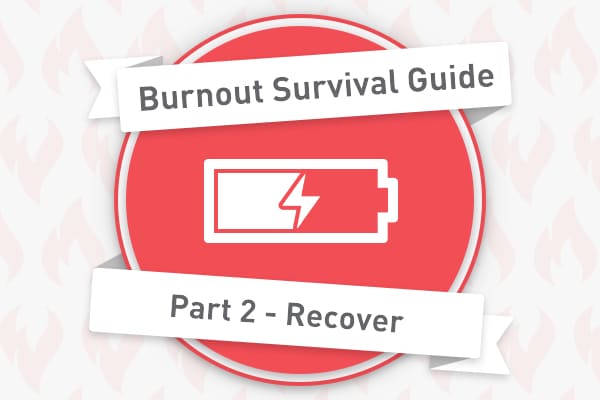Article summary
Last week, I talked about how to spot the signs of burnout. Today’s post is all about what to do once you’ve identified them in yourself. These three steps will help you leave that feeling of burnout behind.
1. Take Time Off
When I am deep in the fiery pits of burnout, the most effective way to start digging myself out is to take some time off. From everything. Everything.
The amount I take off will vary depending on the intensity of emotions I am experiencing and how much time I can realistically take off from work. I typically shoot for anywhere from two to five days.
Because I’m already experiencing dread and lethargy, the first day or so off is great. I have been longing to sit on the couch and do nothing, after all. However, after about a day on the couch, I want to jump right back into my old habits. I force myself not to do this. Let me tell you, it is hard.
My rule for “off days” is that I’m not allowed to work, run errands, or start any new projects. Generally speaking, I am not supposed to be “productive” in the traditional sense of the word. This time off isn’t a time to catch up on house chores, plan a vacation, or map out my professional development for the next year. It is meant to be time off.
This typically manifests in ordering delivery food and sitting on the couch while binge-watching Gilmore Girls until I forget about the heaps of things on my to-do list. I continue these “off days” until I’m feeling ready to take on the world again — not due to a sense of obligation, but from a newfound feeling of being recharged.
Still, I don’t hop back in quite yet. I like to work through the next two activities before I dive back into my “normal” pace.
2. Simplify Commitments
After I’m feeling like fresh batteries have been installed, I take a good hard look at my calendar. The feeling of burnout appeared for a reason, after all. For me, that reason is likely that I slowly started packing more and more onto my plate.
Now is the time to unpack my plate and ensure I’m taking on a healthy portion. I start by looking at my extracurriculars and thinking about how I feel before, during, and immediately after those activities. Any activities that no longer energize me get removed.
This step is incredibly difficult for me. One of my top strengths is “responsibility,” meaning I feel a deep commitment towards the things I do. I get through “giving up” on commitments by reminding myself that I can always come back to them at a later date.
No longer attending a Saturday morning kickboxing class does not mean I can never do kickboxing. It just means that, for now, it will not be part of my weekly routine.
3. Get Inspired
After I am sufficiently recharged and have cleared my calendar to resemble that of a person who can get eight hours of sleep each night, it’s time to get inspired!
Seeking inspiration can be a bit odd. It’s also very personal. The following activities typically spark a fire in me. These may not all resonate with you, but they’re certainly worth a try!
- Take a trip to the local art museum.
- Grab some old film cameras and go exploring.
- Go see live music.
- Take a road trip.
- Try out a new hobby (e.g., rock climbing, kayaking, pottery, watercolor painting).
It’s important to remember that these activities are not intended to become routine appointments on your calendar. This can be tempting, but resist! Instead, view them as à la carte endeavors.
This last step serves as a nice way to close the chapter of burnout. I sat with my feelings of burnout for a while until I wasn’t feeling burned out. Then I made some difficult prioritization decisions with my schedule. And lastly, I gained a little inspiration to boost myself back into a (manageable) routine.
Up Next
Identifying burnout and recovering from burnout are reactive steps for when you are currently experiencing burnout. The next post will take a more proactive approach, addressing how to set yourself up to avoid burnout altogether.

